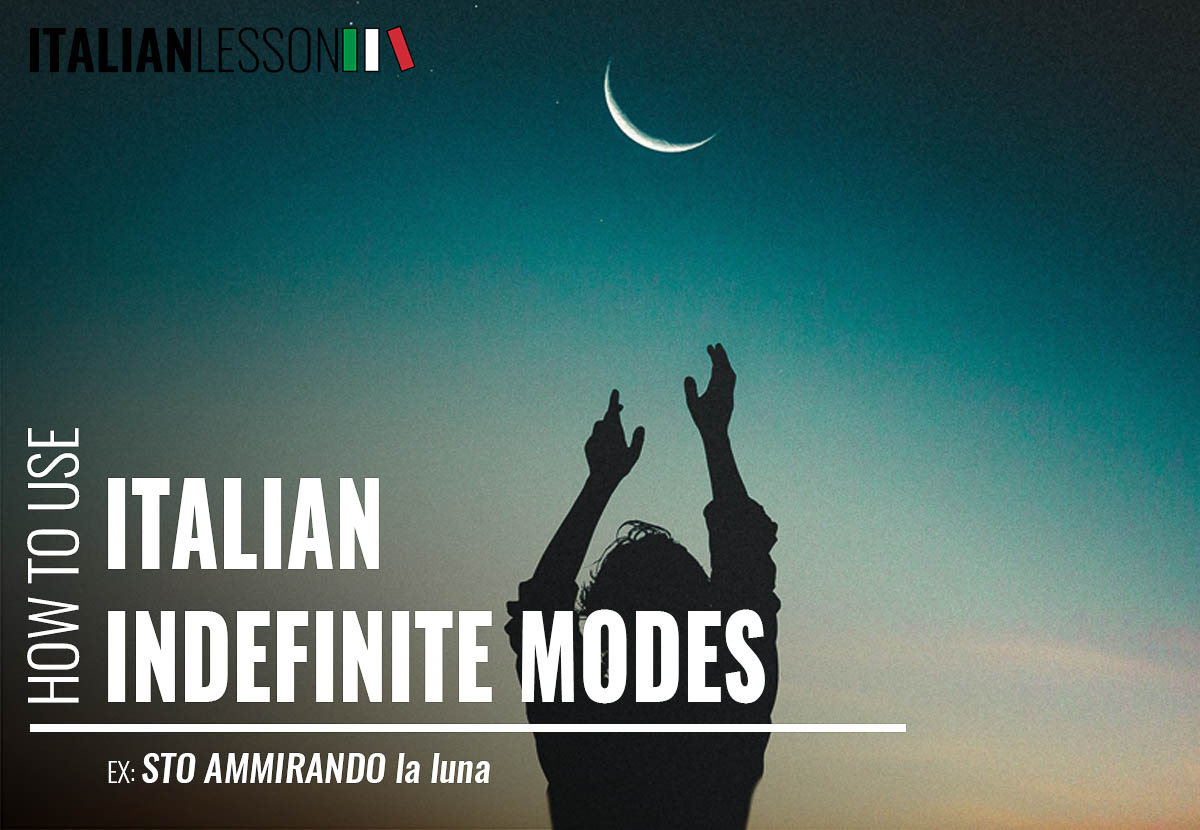
The topic of this article is: Italian indefinite modes.
Italian grammar is very rich in topics and each of them can be the basis for expanding your Italian vocabulary more and more.
This is always connected to correct Italian pronunciation of all the words, verbs and entire sentences that we “encounter” every day when we study a foreign language.
Each topic contains ideas for learning new words and each being must be studied both in its meaning and pronunciation.
In fact, today you will learn the word “indefinite” and how and when to use the Italian indefinite modes!
First of all, in Italian, the indefinite mode doesn’t provide information on the subject to which it refers or on the number and gender; it is precisely for this reason that it is defined as “indefinite”.
There are three Italian indefinite modes: the infinitive, the gerund and the past participle.
Shortly, the Italian infinitive mode consists of the basic form of the verb, which has not been conjugated.
There are two tenses of the infinitive mode:
- present (mangiare – aver mangiato)
- past (andare – essere andato)
The infinitive is also used with modal verbs:
Devo andare / I have to go
The infinitive can also be a noun:
Il mangiare / Eating – Il bere / Drinking.
With all other types of verbs (except modal verbs) the infinitive is preceded by a preposition:
Vado a fare una passeggiata / I go for a walk
The Italian participle gives meaning to the verb and subject of the sentence. It can be considered as an adjective and has two tenses:
- present (dormiente)
- past (dormito)
Plus, the Italian present participle is used as both a verb and an adjective:
Sto ammirando la luna calante / I am admiring the waning moon (verb)
Loro sono una coppia vincente / They are a winning couple(adjective)
The Italian past participle is used to form compound tenses, names and also as an independent clause:
sono andato al mare / I went to the sea (compound tense)
la frittata / the omelette (noun)
mi chiese di andare via / he asked me to leave (independent clause)
The past participle is also used to form passive tense:
L’auto è stata danneggiata da Marco / The car was damaged by Marco
(as you can see, the participle agrees number and gender with the subject to which it refers).
What about the gerund?
Specifically, the Italian gerund is an Italian tense that expresses an action that occurs in conjunction with another or specifies the way in which it occurs and it has two tenses:
- present (mangiando / eating)
- past (avendo mangiato / having eaten – essendo accaduto – having happened).
Let’s see the Italian conjugation for the gerund of MANGIARE (to eat):
| PRESENT | PAST | ||
| Io sto mangiando Tu stai mangiando Egli / Ella – Lui / Lei sta mangiando Noi stiamo mangiando Voi state mangiando Essi / Esse – Loro stanno mangiando | I am eating You are eating He / She / It is eating We are eating You are eating They are eating | Io stavo mangiando Tu stavi mangiando Egli / Ella – Lui / Lei stava mangiando Noi stavamo mangiando Voi stavate mangiando Essi / Esse – Loro stavano mangiando | I was eating You were eating He / She / It was eating We were eating You were eating They were eating |
I know, you will probably be confused. The Italian verb is very varied but don’t worry, you will learn everything!
We leave below links to some of the topics we have referred to in this article:
- Nouns https://italianlesson.it/how-to/italian-noun/
- Prepositions https://italianlesson.it/how-to/italian-prepositions-how-to-use/
Here is another in-depth study on the subject
Remember to study and practice and everything will be fine!
